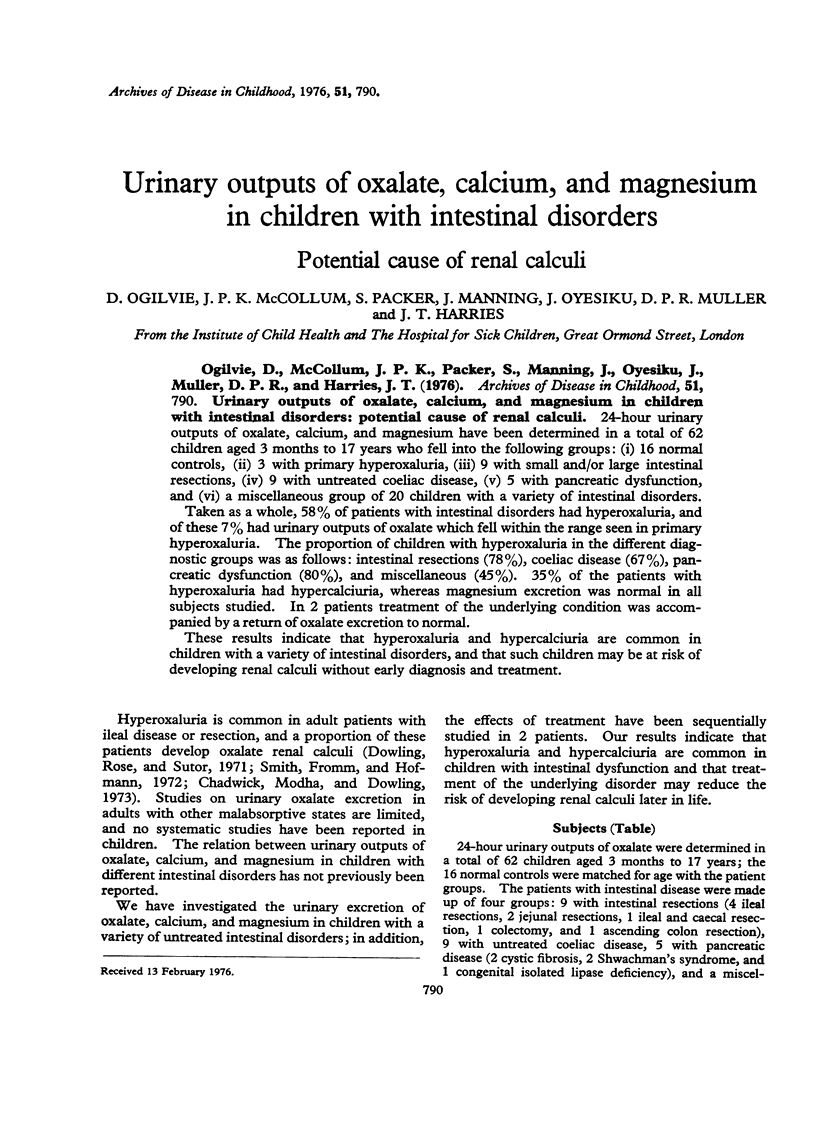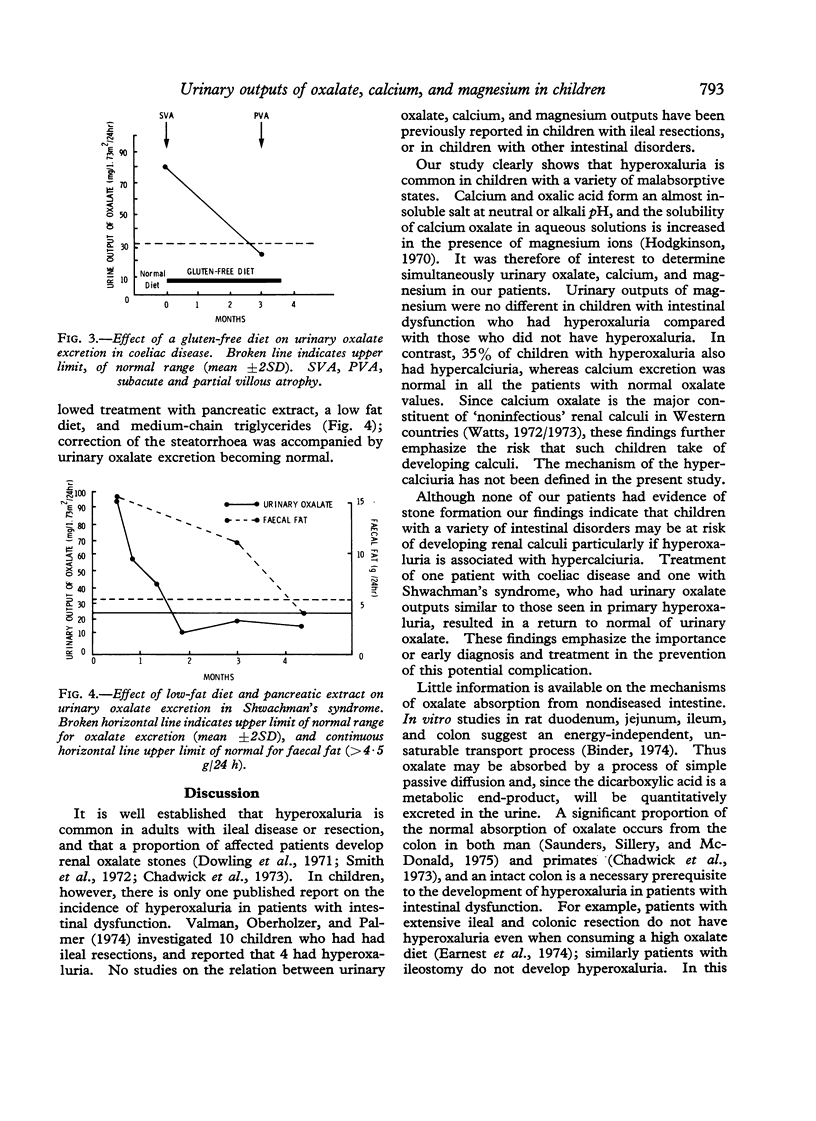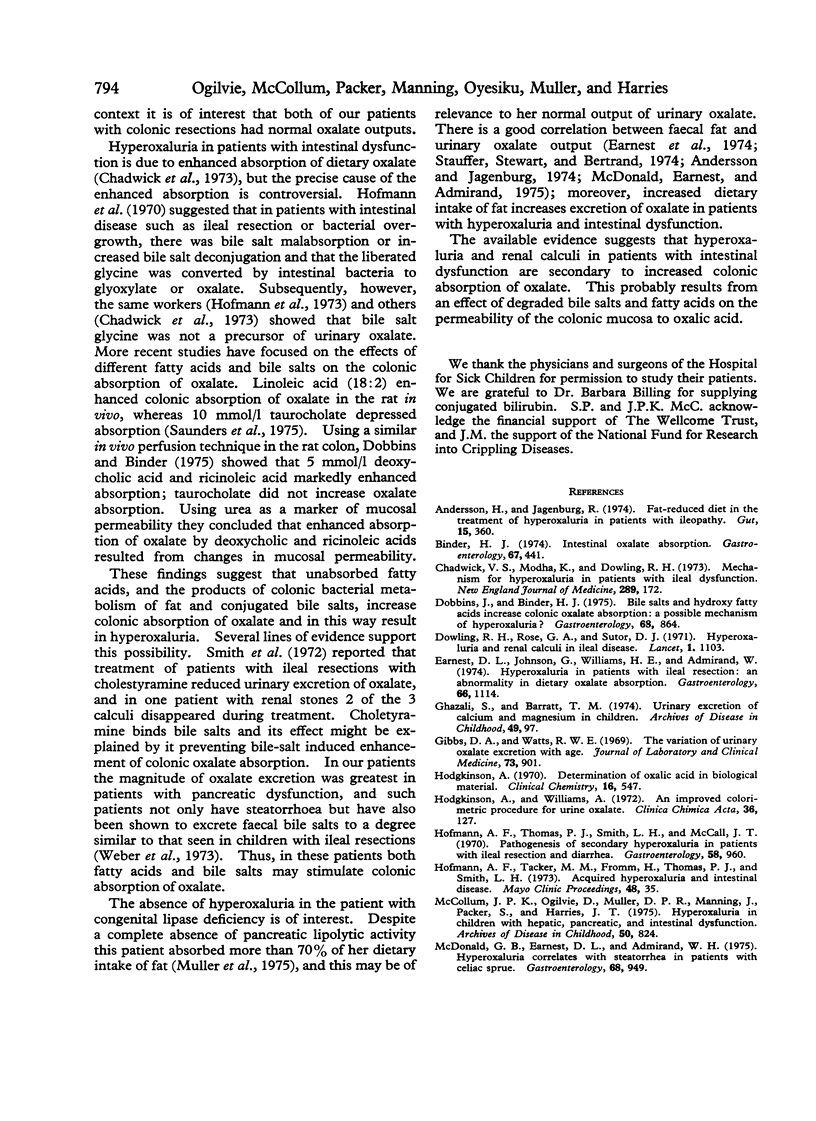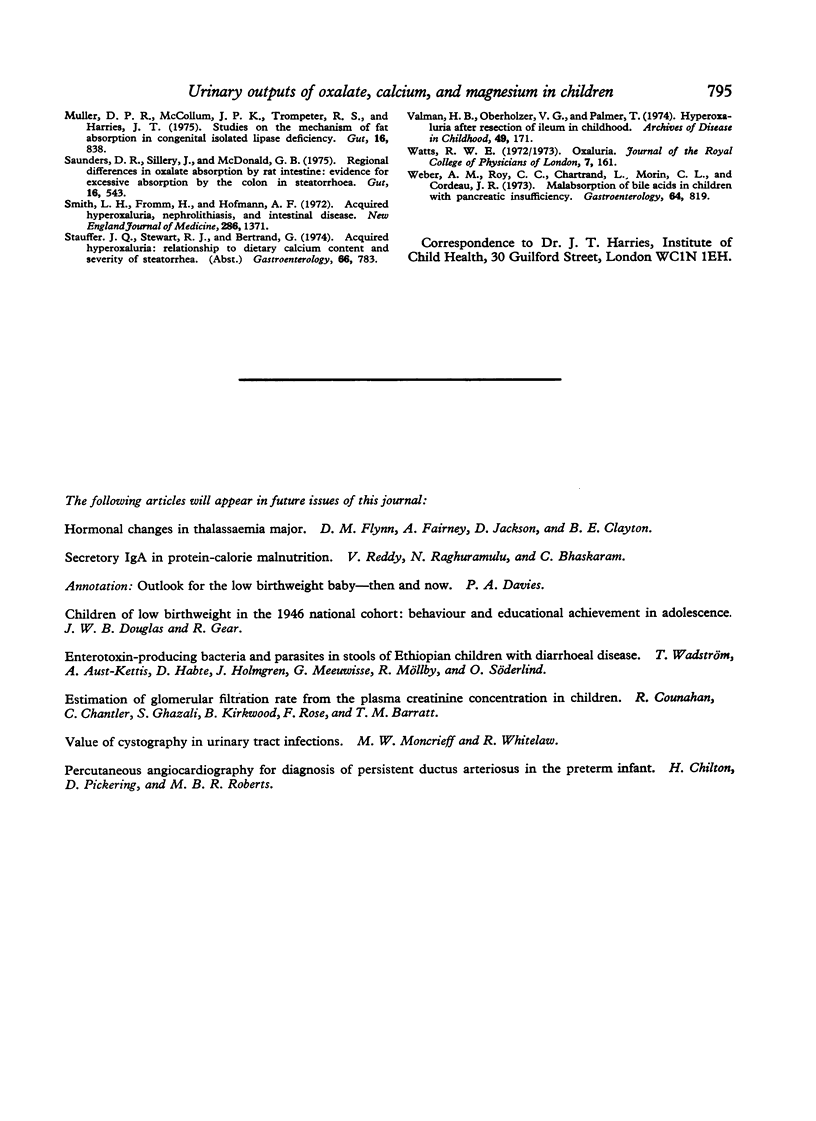Abstract
24-hour urinary outputs of oxalate, calcium, and magnesium have been determined in a total of 62 children aged 3 months to 17 years who fell into the following groups: (i) 16 normal controls, (ii) 3 with primary hyperoxaluria, (iii) 9 with small and/or large intestinal resections, (iv) 9 with untreated coeliac disease, (v) 5 with pancreatic dysfunction, and (vi) a miscellaneous group of 20 children with a variety of intestinal disorders. Taken as a whole, 58% of patients with intestinal disorders had hyperoxaluria, and of these 7% had urinary outputs of oxalate which fell within the range seen in primary hyperoxaluria. The proportion of children with hyperoxaluria in the different diagnostic groups was as follows: intestinal resections (78%), coeliac disease (67%), pancreatic dysfunction (80%), and miscellaneous (45%). 35% of the patients with hyperoxaluria had hypercalciuria, whereas magnesium excretion was normal in all subjects studied. In 2 patients treatment of the underlying condition was accompanied by a return of oxalate excretion to normal. These results indicate that hyperoxaluria and hypercalciuria are common in children with a variety of intestinal disorders, and that such children may be at risk of developing renal calculi without early diagnosis and treatment.
Full text
PDF





Selected References
These references are in PubMed. This may not be the complete list of references from this article.
- Andersson H., Jagenburg R. Fat-reduced diet in the treatment of hyperoxaluria in patients with ileopathy. Gut. 1974 May;15(5):360–366. doi: 10.1136/gut.15.5.360. [DOI] [PMC free article] [PubMed] [Google Scholar]
- Binder H. J. Intestinal oxalate absorption. Gastroenterology. 1974 Sep;67(3):441–446. [PubMed] [Google Scholar]
- Chadwick V. S., Modha K., Dowling R. H. Mechanism for hyperoxaluria in patients with ileal dysfunction. N Engl J Med. 1973 Jul 26;289(4):172–176. doi: 10.1056/NEJM197307262890402. [DOI] [PubMed] [Google Scholar]
- Dowling R. H., Rose G. A., Sutor D. J. Hyperoxaluria and renal calculi in ileal disease. Lancet. 1971 May 29;1(7709):1103–1106. doi: 10.1016/s0140-6736(71)91840-x. [DOI] [PubMed] [Google Scholar]
- Earnest D. L., Johnson G., Williams H. E., Admirand W. H. Hyperoxaluria in patients with ileal resection: an abnormality in dietary oxalate absorption. Gastroenterology. 1974 Jun;66(6):1114–1122. [PubMed] [Google Scholar]
- Ghazali S., Barratt T. M. Urinary excretion of calcium and magnesium in children. Arch Dis Child. 1974 Feb;49(2):97–101. doi: 10.1136/adc.49.2.97. [DOI] [PMC free article] [PubMed] [Google Scholar]
- Gibbs D. A., Watts R. W. The variation of urinary oxalate excretion with age. J Lab Clin Med. 1969 Jun;73(6):901–908. [PubMed] [Google Scholar]
- Hodgkinson A., Williams A. An improved colorimetric procedure for urine oxalate. Clin Chim Acta. 1972 Jan;36(1):127–132. doi: 10.1016/0009-8981(72)90167-2. [DOI] [PubMed] [Google Scholar]
- Hofmann A. F., Tacker M. M., Fromm H., Thomas P. J., Smith L. H. Acquired hyperoxaluria and intestinal disease. Evidence that bile acid glycine is not a precursor of oxalate. Mayo Clin Proc. 1973 Jan;48(1):35–42. [PubMed] [Google Scholar]
- Muller D. P., McCollum J. P., Trompeter R. S., Harries J. T. Proceedings: Studies on the mechanism of fat absorption in congenital isolated lipase deficiency. Gut. 1975 Oct;16(10):838–838. [PubMed] [Google Scholar]
- Saunders D. R., Sillery J., McDonald G. B. Regional differences in oxalate absorption by rat intestine: evidence for excessive absorption by the colon in steatorrhoea. Gut. 1975 Jul;16(7):543–548. doi: 10.1136/gut.16.7.543. [DOI] [PMC free article] [PubMed] [Google Scholar]
- Smith L. H., Fromm H., Hofmann A. F. Acquired hyperoxaluria, nephrolithiasis, and intestinal disease. Description of a syndrome. N Engl J Med. 1972 Jun 29;286(26):1371–1375. doi: 10.1056/NEJM197206292862601. [DOI] [PubMed] [Google Scholar]
- Valman H. B., Oberholzer V. G., Palmer T. Hyperoxaluria after resection of ileum in childhood. Arch Dis Child. 1974 Mar;49(3):171–173. doi: 10.1136/adc.49.3.171. [DOI] [PMC free article] [PubMed] [Google Scholar]
- Watts R. W. Oxaluria. J R Coll Physicians Lond. 1973 Jan;7(2):161–174. [PMC free article] [PubMed] [Google Scholar]


